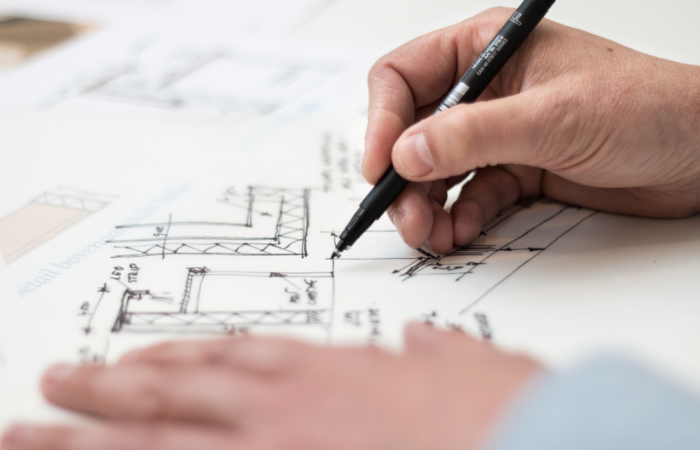Accessory dwelling units, or granny flats, are becoming more popular in San Diego now that city codes have made it easier to build them and there is a major housing shortage in California. If you are considering building an accessory dwelling unit on your property, there are many things you should look into before getting started on the planning process. Here is everything you need to know about accessory dwelling units and using them as an investment during California’s housing shortage.

What is an Accessory Dwelling Unit
Accessory dwelling units are known by many different names, most commonly referred to as granny flats, casitas or in-law units. They are a second, small dwelling on the same grounds or attached to your single-family home. Some examples of accessory dwelling units are an apartment over your garage, a small house in your backyard, a basement apartment, or a small house that is attached to your current home. Legally, accessory dwelling units are part of the same property as the main home and they cannot be bought or sold separately. Granny flats are typically around 500 square feet and they must allow a person to live independently from the primary residential structure, meaning they need to have a place to sleep, a kitchen, and a bathroom.
California Granny Flat Law
Prior to 2017, there were tons of vigorous regulations regarding building accessory dwelling units including requiring massive lot sizes, highly restrictive placements for parking, and ridiculous 10 foot wide walkways that made it incredibly hard to legally build a granny flat. The California Granny Flat Law has made it so much easier for people to build accessory dwelling units on their property. This law was put into place in hopes of improving the California housing shortage we have been facing for quite some time.

Building Requirements
The new granny flat regulations state that the minimum size you can build your granny flat is 150 square feet, while the maximum size is up to 50% of the size of your existing house, maxing out at 1,200 square feet for attached units. If you are converting an existing space, like your garage, or if you are within half a mile of a transit spot, then you do not need to provide additional parking. However, if you don’t qualify for either of those, you will need to provide parking. Regulations state that parking can be anywhere on your land, but it needs to be hardscaped, meaning you can’t park on your lawn or plants. You are now allowed to add parking to your existing driveway, whereas before 2017, it was a lot more complicated. Granny flats require new foundations, new walls, plumbing, electric, heating, cooling, and a separate roof, similar to regular houses. Make sure to look into your local building codes and requirements during the planning phase of your accessory dwelling unit. Certain jurisdictions have their own laws and regulations when it comes to building accessory dwelling units and you will need to get permits and pay fees in order to get construction started.

Benefits of Accessory Dwelling Units
There are many different benefits in building an accessory dwelling unit, including the fact that they are an affordable type of home to construct since you don’t have to pay for land, major new infrastructure, or structured parking. Granny Flats provide a source of income for homeowners because they can rent them out, and with enough space and creativity, you can give them their own separate yard and entrance so you don’t see the tenants very often. Accessory dwelling units are great for adding square footage to your home and they give you the opportunity to provide support for family members who may need your help.
Renting Out Your Accessory Dwelling Unit
Many people decide to build accessory dwelling units on their property so they can rent it out and get another source of income, but there are some things you want to keep in mind before doing that. You might want to register a separate address for your accessory dwelling unit and ensure that USPS can deliver mail to it. Be sure to add details in your lease or rental agreement regarding the designated shared and separate areas. You should also identify parking and storage rights for the tenant as well as any shared utilities and how billing will be calculated. Be sure to look into your local rules and regulations in your jurisdiction because some will place restrictions on short-term rentals. For example, you cannot rent your granny flat on Airbnb in San Diego.

Maximize Your Opportunity
To ensure that you get the most out of your investment, you should only build an accessory dwelling unit if you plan to own your property for an extended amount of time. The investment can be high upfront, but will pay for itself over time. Consider making your granny flat roughly 800 square feet if you can fit it on your property. By having a larger space, you are opening up the opportunity to significantly increase the monthly income you get and can potentially have more than one bedroom and house more than just one person. Also, if you are able to provide a fenced in yard or patio for the tenant, you are once again increasing the potential monthly income you can make off your accessory dwelling unit because a private yard is a major perk for renters in San Diego.
There are so many factors that you should consider if thinking about building an accessory dwelling unit on your property. If you have the space, the money for the investment, and plan to stay in your home for years to come, building a granny flat is a great idea. It will pay for itself over the years, helps the California housing shortage, and provides a space to help out family when in need. If you are interested in learning more about building an accessory dwelling unit and seeing if it is doable on your property, don’t hesitate to reach out to us! We would love to help you build a great space that fits within your budget that can make you money for years to come.

